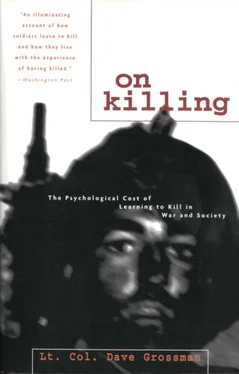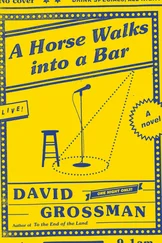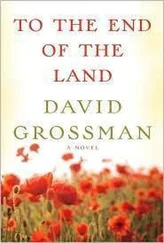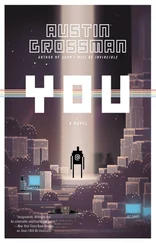Finally, our society says that young adolescents, at the age of seventeen, can legally watch these R-rated movies (although most are well experienced with them by then), and at eighteen they can watch the movies rated even higher than R. These are films in which eye gouging is often the least of the offenses that are vividly depicted. And thus, at that malleable age of seventeen and eighteen, the age at which armies have traditionally begun to indoctrinate the soldier into the business of killing, American youth, systematically desensitized from childhood, takes another step in the indoctrination into the cult of violence.
Adolescents and adults saturate themselves in such gruesome and progressively more horrific “entertainment,” whose antiheroes — like Hannibal the Cannibal, Jason, and Freddy — are sick, unkillable, unquestionably evil, and criminally sociopathic. They have nothing in common with the exotic, esoteric, and misunderstood Frankenstein and Wolf Man villains of an earlier generation of horror films. In the old horror stories and movies, very real but subconscious fears were symbolized by mythic but unreal monsters, such as Dracula, and then exorcised exotically, such as by a stake through the heart. In contemporary horror, terror is personified by characters who resemble our next-door neighbor, even our doctor. Importantly, Hannibal the Cannibal, Jason, and Freddy are not killed, much less exorcised; they return over and over again.
Even in movies where the killer is not an obvious sociopath, the common formula is to validate violent acts of vengeance by beginning the movie with a vivid depiction of the villain performing horrible acts on some innocents. These victims are usually related in some way to the hero, thereby justifying the hero’s subsequent (and vividly depicted) vigilante acts.
Our society has found a powerful recipe for providing killing empowerment to an entire generation of Americans. Producers, directors, and actors are handsomely rewarded for creating the most violent, gruesome, and horrifying films imaginable, films in which the stabbing, shooting, abuse, and torture of innocent men, women, and children are depicted in intimate detail. Make these films entertaining as well as violent, and then simultaneously provide the (usually) adolescent viewers with candy, soft drinks, group companionship, and the intimate physical contact of a boyfriend or girlfriend. Then understand that these adolescent viewers are learning to associate these rewards with what they are watching.
Powerful group processes often work to humiliate and belittle viewers who close their eyes or avert their gaze during these gruesome scenes. Adolescent peer groups reward with respect and admiration those who reflect Hollywood’s standard of remaining hardened and undisturbed in the face of such violence. In effect many viewers have their heads bolted in a psychological clamp so they cannot turn away, and social pressure keeps their eyelids open.
Discussing these movies and this process in psychology classes at West Point, I have repeatedly asked my students how the audience responds when the villain murders some innocent young victim in a particularly horrible way. And over and over again their answer was “The audience cheers.” Society is in a state of denial as to the harmful nature of this, but in efficiency, quality, and scope, it makes the puny efforts of Clockwork Orange and the U.S. government pale by comparison. We are doing a better job of desensitizing and conditioning our citizens to kill than anything Commander Narut ever dreamed of. If we had a clear-cut objective of raising a generation of assassins and killers who are unrestrained by either authority or the nature of the victim, it is difficult to imagine how we could do a better job.
In video stores the horror section repeatedly displays bare breasts (often with blood running down them), gaping eye sockets, and mutilated bodies. Movies rated X with tamer covers are generally not available in many video stores and, if they are, are in separate, adults-only rooms. But the horror videos are displayed for every child to see. Here breasts are taboo if they are on a live woman, but permissible on a mutilated corpse?
When Mussolini and his mistress were publicly executed and hung upside down, the mistress’s dress flopped over her head to display her legs and underwear. One woman in the crowd subsequently had the decency to walk up and tuck the corpse’s dress between its legs in a show of respect for the dead woman: she may have deserved to die, but she did not deserve to be so degraded after death.
Where did we lose this sense of propriety toward the dignity of death? How did we become so hardened?
The answer to that question is that we, as a society, have become systematically desensitized to the pain and suffering of others. We may believe that tabloids and tabloid TV make us exceedingly conscious of the suffering of others as they spread the stories of victims. But the reality is that they are desensitizing us and trivializing these issues as each year they have to find increasingly more bizarre stories to satisfy their increasingly jaded audiences.
We are reaching that stage of desensitization at which the inflicting of pain and suffering has become a source of entertainment: vicarious pleasure rather than revulsion. We are learning to kill, and we are learning to like it.
CHAPTER THREE
B. F. Skinner’s Rats and
Operant Conditioning at the Video Arcade
When I went to boot camp and did individual combat training they said if you walk into an ambush what you want to do is just do a right face — you just turn right or left, whichever way the fire is coming from, and assault. I said, “Man, that’s crazy. I’d never do anything like that. It’s stupid.”
The first time we came under fire, on Hill 1044 in Operation Beauty Canyon in Laos, we did it automatically. Just like you look at your watch to see what time it is. We done a right face, assaulted the hill — a fortified position with concrete bunkers emplaced, machine guns, automatic weapons — and we took it. And we killed — I’d estimate probably thirty-five North Vietnamese soldiers in the assault, and we only lost three killed….
But you know, what they teach you, it doesn’t faze you until it comes down to the time to use it, but it’s in the back of your head, like, What do you do when you come to a stop sign? It’s in the back of your head, and you react automatically.
— Vietnam veteran quoted in Gwynne Dyer,
War
Conditioning Killers in the Military
On the training bases of the major armies of the world, nations struggle to turn teenagers into killers. The “struggle” for the mind of the soldier is a lopsided one: armies have had thousands of years to develop their craft, and their subjects have had fewer than two decades of life experience. It is a basically honest, age-old, reciprocal process, especially in today’s all-volunteer U.S. Army. The soldier intuitively understands what he or she is getting into and generally tries to cooperate by “playing the game” and constraining his or her own individuality and adolescent enthusiasm, and the army systematically wields the resources and technology of a nation to empower and equip the soldier to kill and survive on the battlefield. In the armed forces of most modern armies this application of technology has reached new levels by integrating the innovations of operant conditioning into traditional training methods.
Operant conditioning is a higher form of learning than classical conditioning. It was pioneered by B. F. Skinner and is usually associated with learning experiments on pigeons and rats. The traditional image of a rat in a Skinner box, learning to press a bar in order to get food pellets, comes from Skinner’s research in this field. Skinner rejected the Freudian and humanist theories of personality development and held that all behavior is a result of past rewards and punishments. To B. F. Skinner the child is a tabula rasa, a “blank slate,” who can be turned into anything provided sufficient control of the child’s environment is instituted at an early enough age.
Читать дальше







